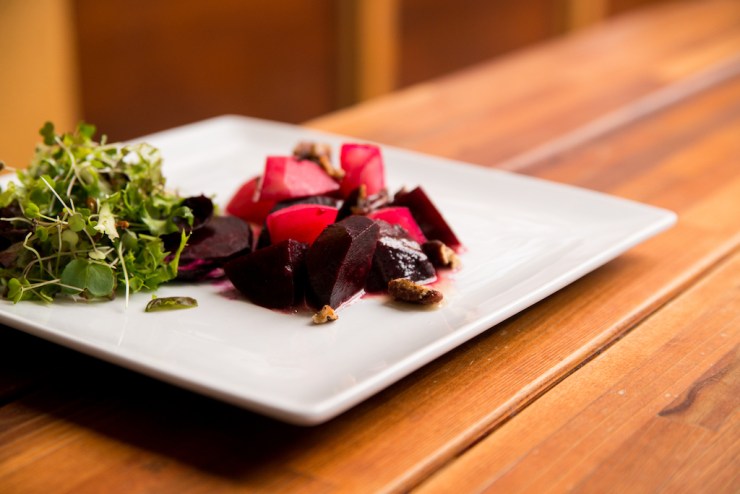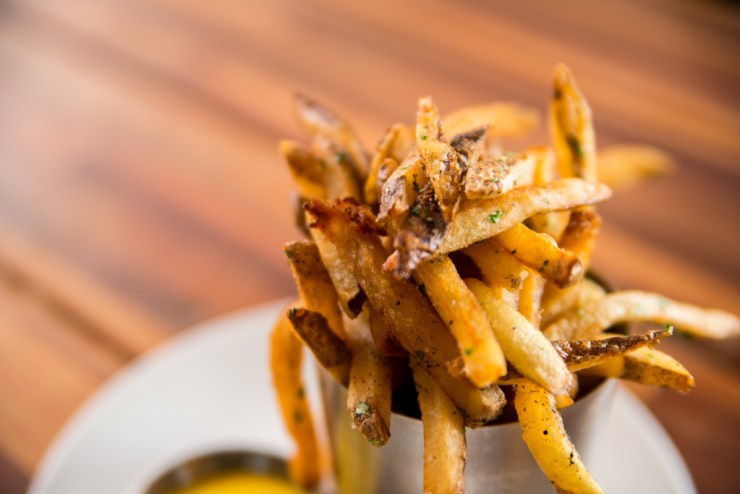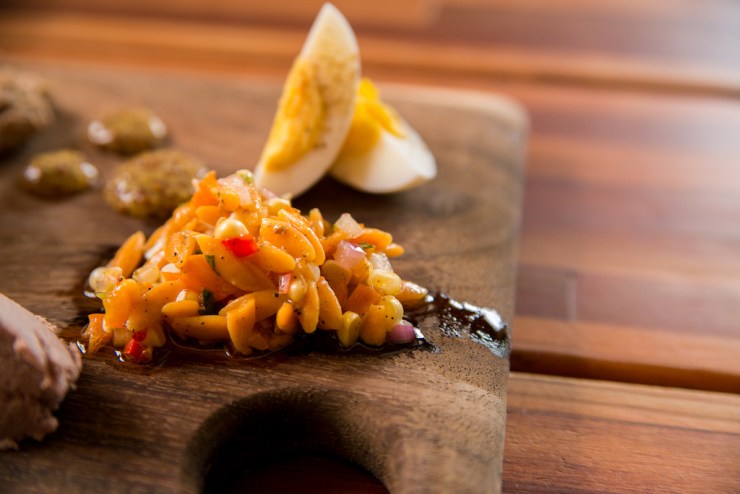One of my favorite photography categories is food and drink. Several years ago, I ran a beer blog and highlighted a “beer of the day,” meaning I had to drink and photograph a beer everyday. It was a bit excessive, but with no speedlight at the time, I learned to use natural light to photograph as best as possible.
Sit by a window and choose an interesting table
Before Covid-19, I was lucky enough to recently visit a local brewery during a photowalk. Knowing we were coming, they sat us right by a huge garage door — entirely plexiglass. It was sunny, but not overpowering, making for an absolutely amazing light dynamic.
Sitting close to a window creates opportunity for a soft light, which can enhance the food and make the colors “pop.”
We chose to take our food into a covered patio area next to where we were sitting, housed with wooden community picnic tables. The wood made the white plates stand out and the colorful food shine.

Focus on specific aspects, and stay true to the culinary vision
With food, I like to look at every aspect of the plate, choosing an item that captures my vision. This is something as minute as a piece of ground pepper or a pecan. I typically choose a few different objects for each plate.
My big rule of thumb though — don’t touch the food until after finishing photographing it. Don’t move things around. Don’t change any aspect of it. I want to capture an image 100 percent true to the chef’s vision.
My one exception — something that’s clearly not supposed to be there (for instance, a speck of sauce that splattered). I’ll wipe it off, or clean it up in post-processing.

Do the twist
I like to shoot multiple angles of food if possible. Tight spaces sometimes don’t allow this, but I regularly shoot from three angles — above, from the side and up-close at a slight angle.
I was able to showcase both an entire plate and some up-close shots, while retaining the atmosphere of the brewery. You have to be selective, though, keeping in mind the background and the other aspects that are visible in your shot.

Keep a semi-opened aperture
Often when shooting food, I slightly blur the background so I can focus more on the plate set before me. But I’d rather have the elements I want in focus to be sharp and crisp. Usually I end up choosing an aperture anywhere from f/4 to f/5.6. This lets me very slightly blur the background and let the dish shine.
I want to keep the other aspects to the dish visible, just not as sharp. Opening up the aperture more, to f/2.8 or f/1.4, I feel causes these elements to not be as visible, which takes away from the mood of the photograph.
Food is an art form. And as photographers, we’re able to capture this art. If nothing else, stay true to the dish. Your goal is photographing in a way that highlights the chef’s culinary skills. It helps in terms of wrapping up a vision for your photograph, and also lends itself to the simple passion that comes with food.
Tell your story with the second annual Visual Storytelling Conference!
Experience four days of interactive, online training sessions featuring a range of educational content with experienced photographers and content creators. This free event kicks off with a series of technical boot camps to build essential skills, followed by live, online sessions on photography, video, business and social media. Join live from March 10-13, 2022!
